How to Create and Maintain a Japanese Garden
Creating and maintaining a Japanese garden is not just about planting a few flowers and placing a stone here and there; it’s an art form that embodies a deep philosophy and connection to nature. Imagine stepping into a serene space where every element has meaning and purpose, where the gentle sound of water trickling over stones soothes your soul. This article explores the essential elements and techniques for designing and sustaining a serene Japanese garden, emphasizing harmony, simplicity, and the natural beauty of the landscape.
At the heart of every Japanese garden lies a philosophy that prioritizes balance and tranquility. The design is deeply rooted in the idea of creating a peaceful sanctuary that reflects the beauty of nature. Think of a Japanese garden as a living painting, where every brushstroke is intentional, and every color has significance. The core principles include:
- Balance: Ensuring that no single element overwhelms another.
- Asymmetry: Embracing irregularity to mirror nature’s randomness.
- Natural Elements: Integrating rocks, water, and plants to create a harmonious environment.
By understanding these principles, you can start to envision how your garden can become a reflection of not just nature, but of your own inner peace.
A Japanese garden is a carefully curated landscape that utilizes various components to evoke a sense of serenity and connection to nature. The key elements include:
- Rocks: Symbolizing mountains or islands, they are essential for grounding the design.
- Water Features: Ponds, streams, and waterfalls create movement and reflect the sky.
- Plants: Carefully selected flora adds color and life, enhancing the garden's beauty.
- Pathways: Winding paths invite exploration and contemplation.
When it comes to selecting plants for your Japanese garden, it’s crucial to choose species that not only look beautiful but also contribute to the overall atmosphere. Common choices include:
- Evergreens: Provide structure and greenery all year round.
- Flowering Trees: Such as cherry blossoms, which offer stunning seasonal displays.
- Moss: Adds a lush, soft texture to the ground, creating a tranquil feel.
Each plant plays a vital role in the garden's narrative, contributing to its seasonal appeal and aesthetic charm.
To ensure your Japanese garden remains captivating throughout the year, consider incorporating plants that bloom in different seasons. For instance, spring might showcase vibrant cherry blossoms, while autumn can be highlighted by the rich hues of maple leaves. This dynamic landscape not only keeps the garden visually interesting but also allows for a deeper appreciation of nature’s cycles.
Keeping your plants healthy is essential for a flourishing garden. Here are some essential tips:
- Proper Watering: Ensure plants receive adequate moisture, especially during dry spells.
- Pruning: Regularly trim plants to promote growth and maintain shape.
- Pest Management: Monitor for pests and diseases to keep your garden vibrant.
With these practices, your garden will not only survive but thrive, creating a beautiful sanctuary for years to come.
Water is a fundamental element in Japanese gardens, symbolizing life and tranquility. Whether it’s a serene pond, a gentle stream, or a cascading waterfall, integrating water features can enhance the overall atmosphere. The sound of water creates a soothing backdrop, inviting visitors to pause and reflect. Consider adding stones to create natural banks or using plants around the water’s edge to soften the transition between land and water.
The layout of your Japanese garden is just as important as its individual elements. Thoughtfully designed pathways guide visitors through the space, encouraging exploration and a deeper connection with nature. Winding paths, made from natural materials like stone or gravel, create a sense of journey and discovery. Imagine strolling through your garden, each turn revealing a new perspective or focal point.
When constructing pathways and structures, opt for natural materials that blend seamlessly with the environment. Stones, gravel, and wood not only maintain authenticity but also enhance the garden’s organic feel. The goal is to create a space that feels like a natural extension of the landscape, inviting visitors to engage with every element.
Every garden needs a few focal points to draw the eye and create interest. Whether it’s a beautifully crafted lantern, a charming bridge, or a striking sculpture, these elements can enhance the overall design. Think of them as the punctuation marks in your garden’s story, adding emphasis and creating a sense of balance within the space.
Q: How long does it take to create a Japanese garden?
A: The time varies based on the size and complexity of the garden, but generally, it can take several months to a few years to fully develop and mature.
Q: What is the best time to plant in a Japanese garden?
A: Spring and fall are ideal for planting, as the weather is mild and allows plants to establish roots before the heat of summer or the cold of winter.
Q: Can I create a Japanese garden in a small space?
A: Absolutely! Japanese gardens can be adapted to fit small spaces by focusing on key elements and using vertical features to create depth.
Q: How do I maintain the tranquility of my Japanese garden?
A: Regular maintenance, such as pruning, cleaning water features, and removing debris, helps keep the garden serene and inviting.
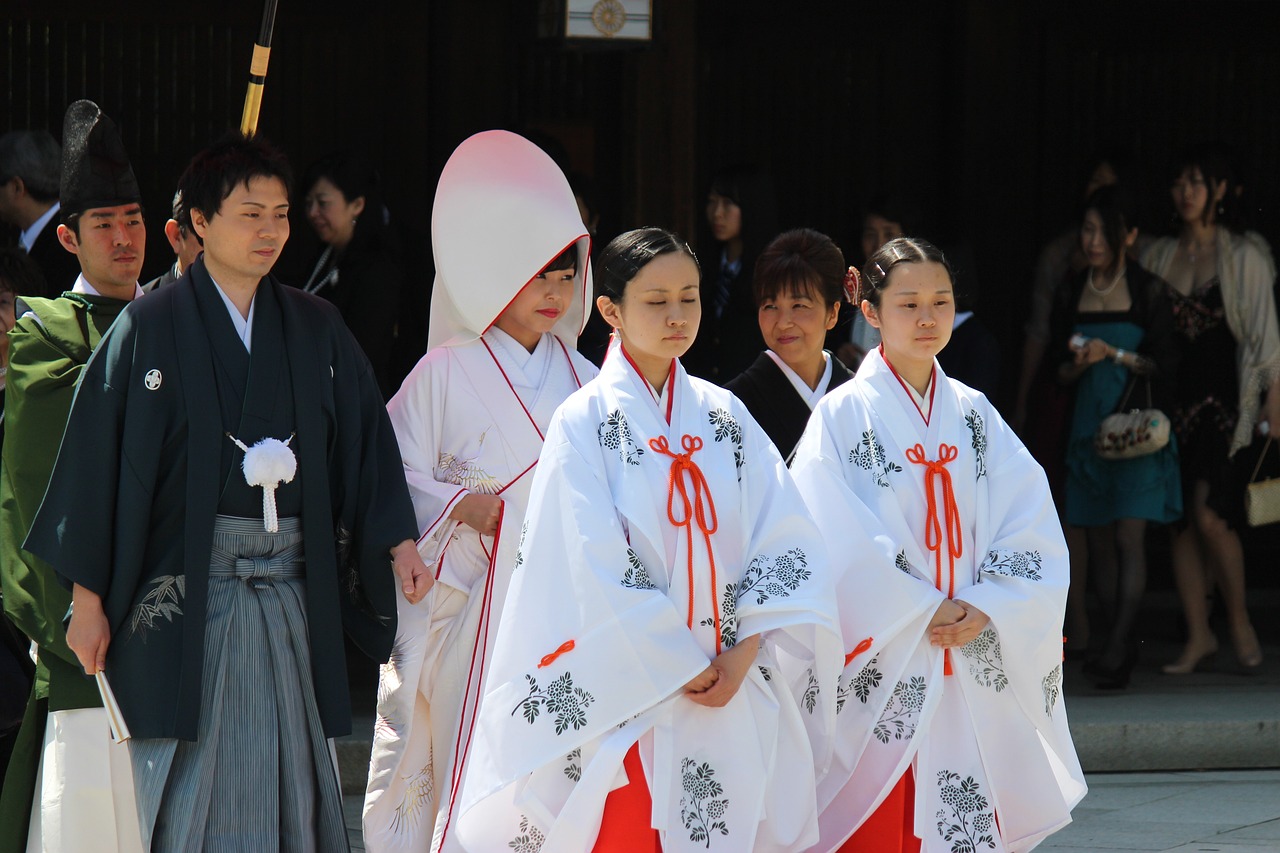
Understanding Japanese Garden Philosophy
When you step into a Japanese garden, it’s like entering a world where nature and art dance in perfect harmony. The philosophy behind these gardens is deeply rooted in the principles of balance, tranquility, and an appreciation for the natural landscape. Imagine walking through a space that not only calms your mind but also nourishes your soul. This is the essence of Japanese garden design, where every element serves a purpose and contributes to a larger narrative.
At the heart of this philosophy is the idea of shinrin-yoku, or "forest bathing," which emphasizes the therapeutic effects of nature. It’s about immersing yourself in the environment and allowing the beauty around you to wash over you. Each garden is a sanctuary, a place where one can escape the chaos of daily life and reconnect with the simplicity of nature. The gardens are designed to evoke feelings of peace and reflection, often resembling miniature landscapes that mirror the natural world.
One of the most important aspects of Japanese garden philosophy is the concept of asymmetry and irregularity. Unlike Western gardens that often emphasize symmetry and order, Japanese gardens embrace the beauty of the imperfect. This is where the art of Wabi-Sabi comes into play, celebrating the beauty found in impermanence and the natural cycle of growth and decay. For instance, a weathered stone or a gnarled tree can be seen as a testament to time, adding character and depth to the garden.
Moreover, the integration of natural elements is vital. Water, rocks, plants, and even the air play significant roles in creating a cohesive environment. Each component is carefully selected and arranged to create a sense of unity and harmony. For example, the placement of rocks can symbolize mountains, while water features might represent rivers or oceans. This thoughtful arrangement encourages visitors to explore and appreciate the garden from various perspectives.
In addition to the aesthetic components, the philosophy also emphasizes the importance of seasonality. A Japanese garden is not static; it evolves with the seasons, offering different experiences throughout the year. Cherry blossoms in spring, vibrant foliage in autumn, and the serene stillness of snow in winter all contribute to a dynamic landscape that invites continuous discovery. This seasonal change is not just visual but also emotional, as each phase brings its own unique atmosphere and feelings.
Ultimately, the philosophy of Japanese gardens is about creating a space that invites contemplation and connection with nature. It’s a reminder to slow down, breathe deeply, and appreciate the beauty that surrounds us. By understanding these principles, you can begin to appreciate the profound simplicity and elegance that Japanese gardens offer, making them a true reflection of the natural world.
- What are the main elements of a Japanese garden? Japanese gardens typically include elements such as rocks, water features, plants, and pathways, all arranged to create a harmonious environment.
- How do I maintain a Japanese garden? Regular maintenance includes proper watering, pruning, and pest management to ensure the health of plants and the overall aesthetic of the garden.
- Can I create a Japanese garden in a small space? Absolutely! Even small spaces can be transformed into serene Japanese gardens with careful planning and the right selection of plants and features.
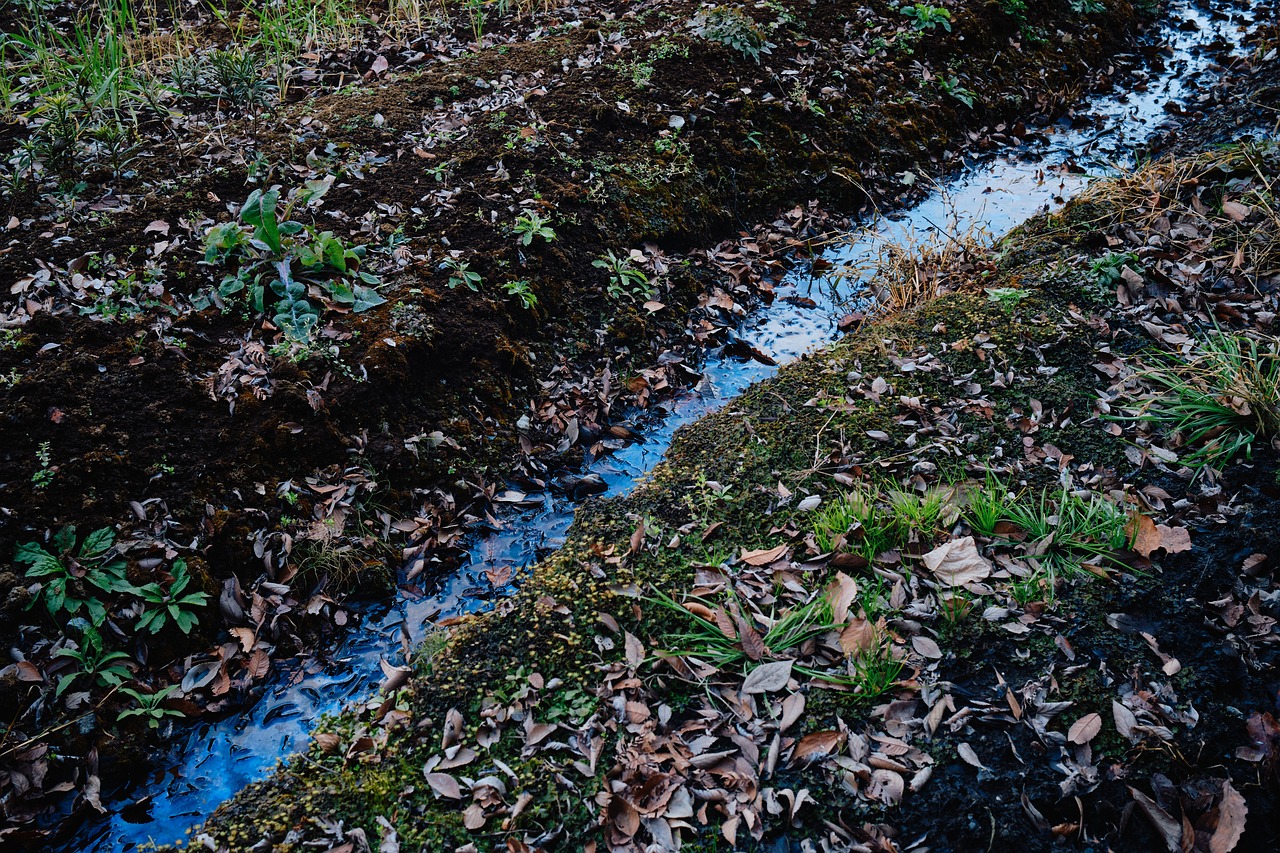
Essential Elements of a Japanese Garden
When it comes to creating a Japanese garden, understanding the essential elements is crucial for achieving that serene and harmonious atmosphere. Each component plays a vital role in reflecting the beauty of nature and creating a peaceful sanctuary. At the heart of these gardens are four primary elements: rocks, water features, plants, and pathways. Together, they form the foundation of a Japanese garden that not only pleases the eye but also nourishes the soul.
Rocks are often considered the backbone of a Japanese garden. They symbolize mountains and islands, providing a sense of permanence and stability. When selecting rocks, it's important to choose various sizes and shapes to create visual interest. Placement is key—arranging them thoughtfully can mimic natural landscapes and enhance the garden's overall aesthetic. For instance, a cluster of large boulders can represent a mountain range, while smaller stones can resemble pebbles along a riverbank.
Water features add another layer of tranquility to the garden. Whether it’s a serene pond, a babbling brook, or a majestic waterfall, the sound and sight of water can create a soothing ambiance. Water not only reflects the sky and surrounding flora but also symbolizes purity and renewal in Japanese culture. When designing these features, consider incorporating natural elements like stones and plants around the water to create a seamless transition between the garden and its aquatic components.
Plants are the living tapestry of the garden, providing color, texture, and seasonal interest. Choosing the right plants is essential for achieving the desired aesthetic. Common choices include evergreens, flowering trees, and moss. Evergreens, such as Japanese black pine, offer year-round greenery, while cherry blossoms add a splash of color in spring. Moss, often used as ground cover, creates a lush, soft carpet that invites visitors to walk through the garden. The combination of different plant types can create a dynamic landscape that evolves with the seasons.
Pathways in a Japanese garden serve not only as practical routes but also as a means to guide visitors through the space. The winding paths encourage exploration and contemplation, making each visit a new experience. Using natural materials like gravel, stones, and wood helps maintain authenticity and blend the pathways seamlessly with the surrounding environment. A well-designed pathway can lead to various focal points, inviting guests to pause and appreciate the beauty around them.
In summary, the essential elements of a Japanese garden work together to create a harmonious and tranquil environment. By thoughtfully selecting rocks, incorporating water features, choosing the right plants, and designing inviting pathways, you can cultivate a garden that reflects the beauty of nature and provides a peaceful retreat from the hustle and bustle of everyday life.
- What is the most important element in a Japanese garden? While all elements are vital, rocks are often considered the backbone due to their symbolic representation of mountains and stability.
- Can I use any plants in a Japanese garden? It's best to choose plants that are commonly found in Japanese gardens, such as evergreens, flowering trees, and moss, to maintain authenticity.
- How do I maintain the water features in my garden? Regular cleaning, checking for debris, and ensuring proper water circulation are essential for keeping water features healthy and attractive.
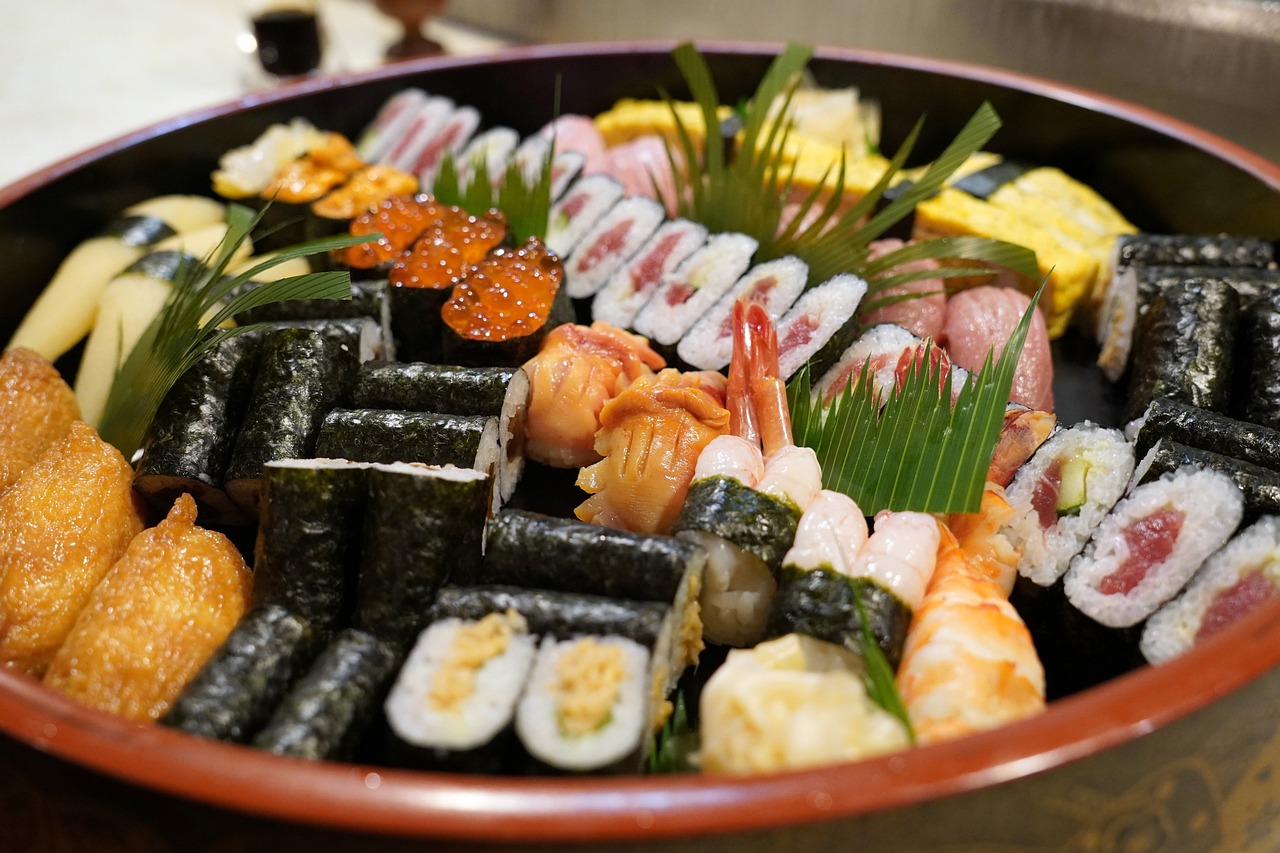
Choosing the Right Plants
When it comes to creating a stunning Japanese garden, selecting the right plants is absolutely crucial. Imagine walking through a serene landscape where each plant plays its part in a beautiful symphony of colors and textures. This is the essence of a Japanese garden! The choice of plants can evoke feelings of tranquility and harmony, which are fundamental principles of Japanese garden philosophy. So, what should you consider when choosing plants for your garden? Let's dive into the world of flora!
First and foremost, you want to think about the climate in your area. Different plants thrive in different conditions, so it's essential to choose species that can flourish in your local environment. For example, if you live in a region with cold winters, evergreens such as Japanese Black Pine or Yew can provide year-round greenery. On the other hand, if you're in a milder climate, you might explore flowering trees like Cherry Blossom or Japanese Maple, which offer stunning blooms in the spring.
Another important aspect is the seasonal appeal of the plants. A well-designed Japanese garden should change with the seasons, providing visual interest throughout the year. For instance, incorporating plants that bloom at different times can create a dynamic landscape. In the spring, you can enjoy the delicate blossoms of cherry trees, while in the fall, the vibrant colors of maples can take center stage. Here’s a quick overview of some popular plants and their seasonal highlights:
| Plant Type | Season of Interest | Notable Features |
|---|---|---|
| Cherry Blossom | Spring | Beautiful pink flowers |
| Japanese Maple | Fall | Vibrant red and orange leaves |
| Moss | Year-round | Soft, lush green carpet |
| Evergreens (e.g. Yew) | Year-round | Consistent greenery |
In addition to aesthetics, think about the functionality of the plants. Some plants can serve as natural barriers or privacy screens, while others can attract beneficial wildlife like butterflies and birds. For instance, planting Azaleas not only adds color but also provides shelter for various pollinators. By choosing a mix of plants that offer both beauty and function, you can create a garden that is not just visually appealing but also ecologically balanced.
Finally, don’t underestimate the power of texture and layering. A Japanese garden thrives on diversity, and mixing plants with different leaf shapes and sizes can add depth and interest to your landscape. Consider pairing the delicate leaves of a Japanese Maple with the robust foliage of a Fern or the soft texture of moss. This layering not only enhances the visual appeal but also mimics the natural landscapes found in Japan.
In conclusion, choosing the right plants for your Japanese garden is about more than just picking pretty flowers. It’s about creating a harmonious environment that reflects the beauty of nature while ensuring seasonal interest and ecological functionality. So, take your time, research your options, and let your garden flourish into a tranquil oasis that you'll cherish for years to come!
- What are the best plants for a Japanese garden? Popular choices include Cherry Blossom, Japanese Maple, and various evergreens.
- How do I maintain the plants in my Japanese garden? Regular watering, pruning, and pest management are essential for plant health.
- Can I create a Japanese garden in a small space? Absolutely! You can adapt the principles of Japanese gardening to fit any size space.
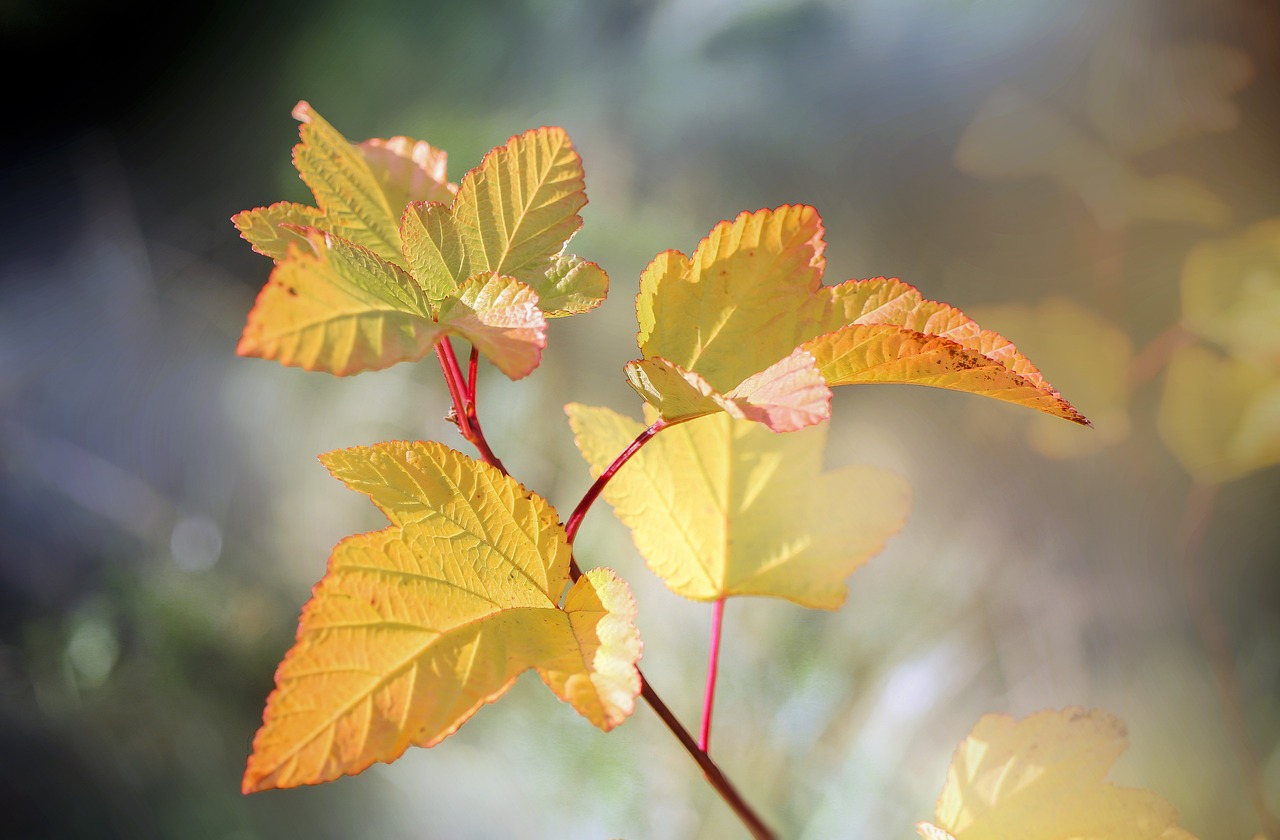
Seasonal Considerations for Plant Selection
When it comes to creating a stunning Japanese garden, seasonal considerations for plant selection are not just important; they're absolutely vital. Imagine walking through your garden and being greeted by a symphony of colors and textures that change with the seasons. This dynamic aspect not only enhances the aesthetic appeal but also creates a living, breathing landscape that evolves over time. So, how do you ensure that your garden remains captivating throughout the year? Let’s dive into some essential tips.
First off, it's essential to choose a variety of plants that bloom or showcase their beauty at different times of the year. This way, you can enjoy a colorful display from spring's first blossoms to the crisp foliage of autumn. For example, consider incorporating cherry blossoms that burst into bloom in spring, followed by azaleas that provide vibrant colors in early summer. As summer fades, you might want to add Japanese maples that flaunt their fiery reds and oranges in the fall.
Here's a quick overview of some plants that can add seasonal interest to your Japanese garden:
| Season | Plant Type | Example Plants |
|---|---|---|
| Spring | Flowering Trees | Cherry Blossom, Magnolia |
| Summer | Flowering Shrubs | Azalea, Hydrangea |
| Fall | Deciduous Trees | Japanese Maple, Ginkgo |
| Winter | Evergreens | Pine, Bamboo |
In addition to choosing plants that bloom at different times, you should also consider texture and foliage. For instance, evergreens provide a lush backdrop during the winter months when many other plants are dormant. They can create a sense of continuity and structure in your garden, ensuring that it remains visually appealing even in the coldest months. Think of evergreens as the backbone of your garden, providing stability and a sense of permanence.
Another aspect to consider is seasonal maintenance. Different plants may require varying levels of care throughout the year. For instance, spring is often the time for pruning and preparing your garden for the growing season, while fall is ideal for planting new perennials that will bloom the following year. By understanding the seasonal needs of your plants, you can create a thriving garden that requires less effort and yields more beauty.
In conclusion, selecting plants for your Japanese garden with a keen eye on the seasons is like painting a masterpiece that changes with the light. Each season brings its own palette, and by choosing wisely, you can ensure that your garden is a year-round sanctuary of beauty and tranquility. So, get out there, embrace the seasons, and let your garden flourish!
- What are the best plants for a Japanese garden? The best plants include flowering trees like cherry blossoms, evergreens like pine, and seasonal flowers such as azaleas.
- How do I maintain my Japanese garden throughout the seasons? Regular pruning, watering, and seasonal planting will help maintain your garden's health and beauty.
- Can I create a Japanese garden in a small space? Absolutely! You can design a small Japanese garden using container plants and carefully chosen elements.
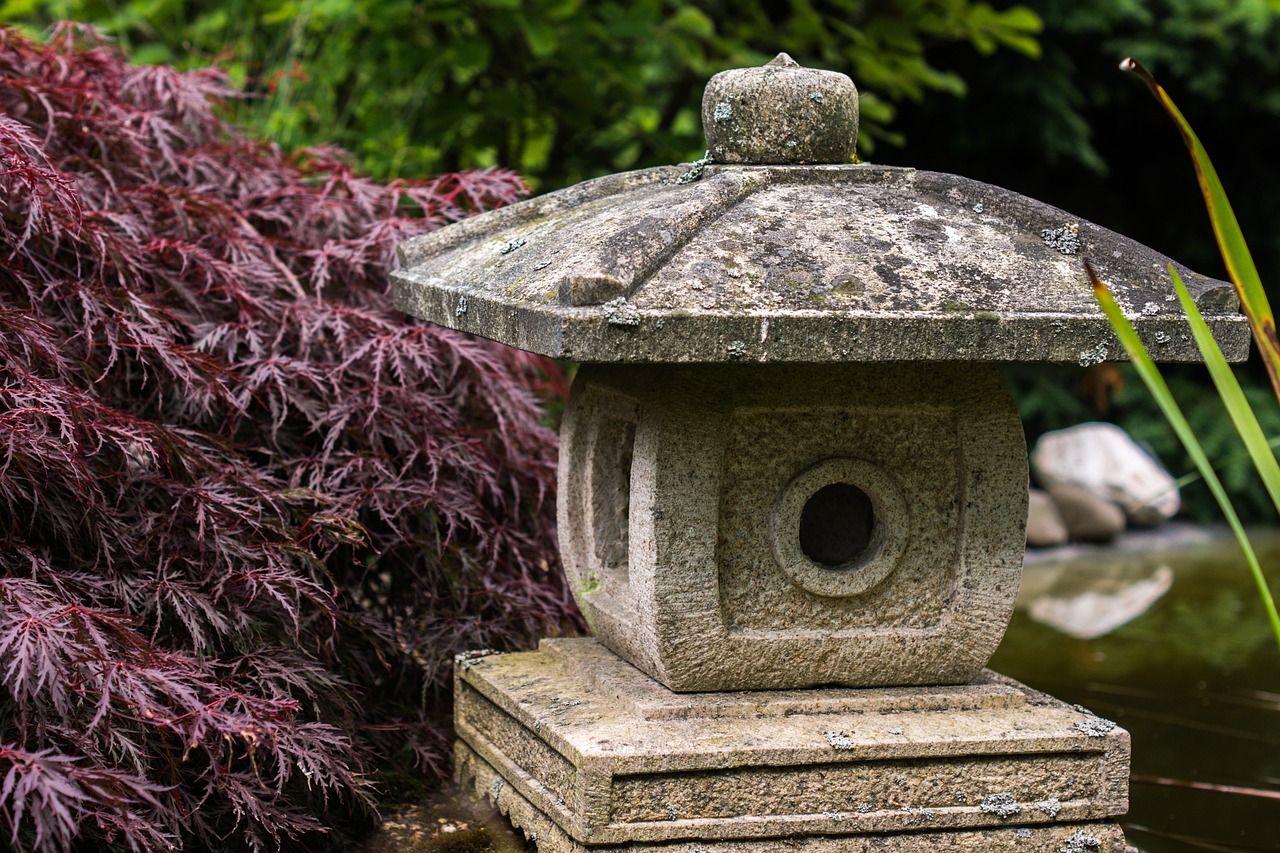
Maintaining Plant Health
Maintaining the health of your plants is crucial for the longevity and beauty of your Japanese garden. Just like a well-tended relationship, plants require attention, care, and a little bit of love to thrive. First and foremost, proper watering is essential. Overwatering can lead to root rot, while underwatering can stress your plants. A good rule of thumb is to check the soil moisture before watering. Stick your finger about an inch into the soil; if it feels dry, it’s time for a drink!
Next, let’s talk about the importance of pruning. This isn’t just about keeping things tidy; it’s about encouraging healthy growth. Regularly trimming back dead or overgrown branches allows for better air circulation and sunlight penetration, which are vital for photosynthesis. Think of it as giving your plants a fresh haircut to keep them looking their best!
Additionally, pest management is a key component in maintaining plant health. Japanese gardens often attract various insects, some of which can be harmful. It’s important to regularly inspect your plants for signs of pests such as aphids or spider mites. If you spot any unwelcome guests, consider using organic pesticides or introducing beneficial insects like ladybugs that naturally control pest populations. Remember, a healthy garden is a balanced ecosystem!
Moreover, understanding your plants' specific needs is crucial. Different species may require different care routines. For instance, evergreens generally need less water than flowering trees. Here’s a simple table to help you keep track of some common plants found in Japanese gardens and their maintenance needs:
| Plant Type | Watering Frequency | Pruning Season | Pest Management Tips |
|---|---|---|---|
| Japanese Maple | Weekly | Late Winter | Check for aphids; use neem oil if needed. |
| Moss | Bi-weekly | Not required | Keep moist; watch for mold. |
| Evergreen Trees | Monthly | Early Spring | Inspect for scale insects; use insecticidal soap. |
Lastly, creating a routine for your garden care can make all the difference. Set aside time each week to assess your plants, check for pests, and tend to any pruning or watering needs. This not only keeps your garden looking its best but also allows you to connect with the natural beauty surrounding you. Remember, a little bit of consistent care goes a long way in maintaining the health of your Japanese garden!
- How often should I water my Japanese garden? It depends on the plant species, but generally, checking the soil moisture weekly is a good practice.
- What is the best time to prune my plants? Late winter is usually ideal for most plants, but always check the specific needs of each species.
- Are there natural ways to manage pests? Yes, introducing beneficial insects like ladybugs and using organic pesticides can help control pests without harming your garden.
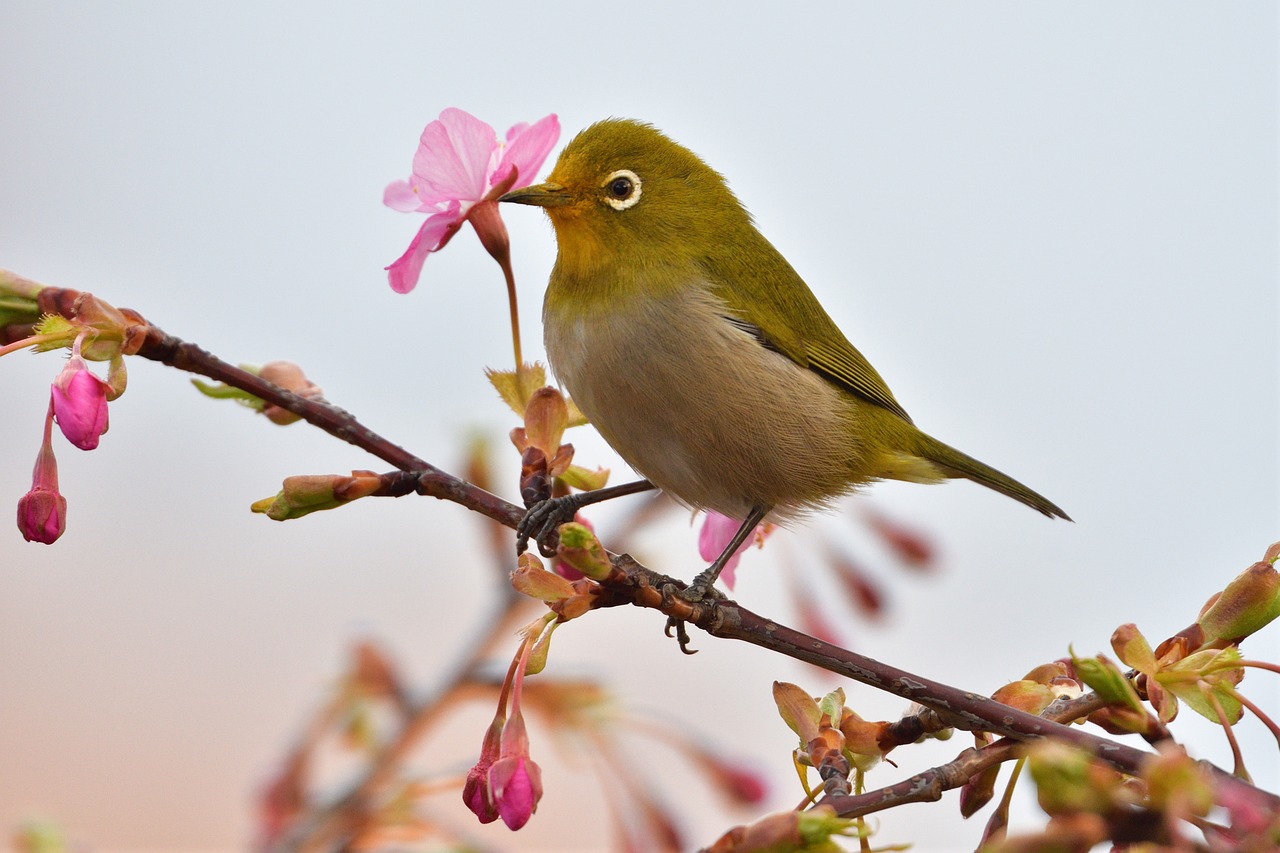
Incorporating Water Features
Water features are a quintessential element of Japanese gardens, serving not only as a source of serenity but also as a means to reflect the beauty of nature. Imagine the gentle sound of a trickling stream or the tranquil stillness of a pond; these elements create an atmosphere that invites deep contemplation and relaxation. In a Japanese garden, water symbolizes life and purity, making it a vital component in achieving harmony and balance.
When designing your garden, consider incorporating various types of water features, each offering its unique charm. Here are a few popular options:
- Ponds: A pond can be a stunning centerpiece, often filled with koi fish and surrounded by lush vegetation. The still water reflects the sky and surrounding plants, creating a living painting that changes with the light.
- Streams: Winding streams can guide the eye through the garden, mimicking the natural flow of water found in nature. The sound of water flowing over rocks adds a soothing auditory element to the experience.
- Waterfalls: A waterfall can provide a dramatic focal point, cascading water over rocks and creating a dynamic visual and auditory experience. The sound of falling water can mask unwanted noise from the outside world, enhancing the garden's tranquility.
Integrating these water features requires thoughtful planning. The placement should feel natural, as if the water has always been part of the landscape. Use rocks and plants to frame the water, creating a seamless transition between the feature and the surrounding garden. Additionally, consider the scale of your water feature; it should be proportionate to the size of your garden space. A small garden may benefit from a simple pond or a small stream, while larger areas can accommodate more elaborate designs.
Moreover, water features can also support wildlife, attracting birds, frogs, and beneficial insects. This not only enhances biodiversity but also adds an element of life and movement to your garden. By carefully selecting the plants around your water feature, you can create a habitat that encourages these creatures to thrive.
Maintenance is another important aspect to consider when incorporating water features. Regular cleaning is essential to prevent algae buildup and ensure the water remains clear and inviting. If you have fish, pay attention to water quality and temperature, adjusting as necessary to keep your aquatic friends healthy.
In summary, water features are more than just decorative elements in a Japanese garden; they are integral to creating a peaceful sanctuary that reflects the beauty of nature. By thoughtfully incorporating ponds, streams, and waterfalls, you can enhance the overall aesthetic and tranquility of your garden, inviting both you and your visitors to pause, reflect, and connect with the natural world.
Q1: What is the best type of water feature for a small Japanese garden?
A small pond or a miniature stream is ideal for a compact space. These features can create a sense of depth without overwhelming the garden.
Q2: How can I keep my water feature clean?
Regular maintenance, including removing debris and using a pond pump, will help keep your water feature clean. Consider adding aquatic plants that naturally filter the water.
Q3: Can I use native plants around my water feature?
Absolutely! Native plants can enhance biodiversity and are often better suited to the local climate, requiring less maintenance.

Designing Pathways and Layout
When it comes to creating a Japanese garden, the design of pathways and layout is as crucial as the selection of plants and water features. Think of pathways as the veins of your garden, guiding visitors through the serene landscape and inviting them to explore its hidden corners. A well-designed pathway can transform an ordinary garden into a captivating journey, where each step reveals a new perspective and a deeper connection with nature.
One of the fundamental principles of Japanese garden design is the concept of asymmetry. Unlike Western gardens that often embrace symmetry and formality, Japanese gardens thrive on a more organic and natural feel. This means that your pathways should not be straight and rigid, but rather meander gently, creating a sense of discovery. Imagine walking through a forest; the winding trails lead you to unexpected spots, much like how your garden should unfold.
As you plan your pathways, consider incorporating a variety of materials. Natural elements such as stone, gravel, and wood not only enhance the authenticity of your garden but also harmonize with the surrounding environment. For instance, a path made of smooth river stones can evoke a sense of tranquility, while a wooden boardwalk can add a rustic charm. Each material brings its own character, so choose those that resonate with the overall theme of your garden.
Another essential aspect of designing pathways is the layout. Think about how visitors will move through the space. You want to create a flow that feels natural and intuitive. To achieve this, consider the following:
- Curved Paths: Curves can soften the landscape and make the garden feel more inviting.
- Elevation Changes: Incorporating small hills or dips can add depth and intrigue to your layout.
- Viewpoints: Designate spots along the pathway where visitors can pause and enjoy the scenery, perhaps with a bench or a stone lantern.
In addition to pathways, focal points are integral to the layout of your garden. These can be strategically placed elements such as a quaint bridge over a koi pond or a beautifully crafted lantern that draws the eye. Focal points not only provide visual interest but also serve as destinations within the garden, encouraging visitors to explore further. Think of them as the cherry on top of your garden sundae, making the whole experience that much sweeter.
Ultimately, the design of your pathways and layout should reflect the essence of harmony that is central to Japanese gardens. Each element should work in concert with one another, creating a cohesive and tranquil environment. So, as you embark on this journey of garden design, remember to embrace the beauty of simplicity and the power of nature. Your pathways will not just be routes to follow; they will be experiences to savor.
Q: What materials are best for pathways in a Japanese garden?
A: Natural materials like stone, gravel, and wood are ideal as they blend seamlessly with the environment and enhance the garden's authenticity.
Q: How can I create focal points in my garden?
A: Consider adding elements like bridges, lanterns, or unique sculptures that draw the eye and provide interest throughout the garden.
Q: Should pathways be straight or curved?
A: Curved pathways are preferred in Japanese gardens as they create a more organic feel and encourage exploration.

Using Natural Materials
When it comes to crafting a Japanese garden, the choice of materials plays a crucial role in achieving that authentic feel. Using natural materials not only enhances the beauty of the landscape but also ensures that your garden harmonizes with the surrounding environment. Imagine walking through a garden where every element feels like it belongs—this is what natural materials can help you achieve. From stones to wood, every choice contributes to the overall aesthetic and philosophy of tranquility.
One of the most popular materials used in Japanese gardens is stone. Stones can serve multiple purposes, acting as pathways, borders, or even focal points. They come in various shapes and sizes, allowing for creativity in design. For instance, large, flat stones can create a rustic pathway, while smaller pebbles can be used as ground cover, resembling a riverbed. The colors and textures of the stones can also evoke different feelings, from the calmness of smooth river stones to the ruggedness of rough boulders.
Another essential natural material is wood. Whether used for bridges, benches, or fencing, wood adds warmth and an organic touch to the garden. It’s important to select wood that is durable and weather-resistant, such as cedar or redwood, which can withstand the elements while maintaining their beauty. Additionally, using reclaimed wood can add a unique character and story to your garden, making it even more special.
Water features are a significant part of Japanese gardens, and natural materials can enhance these elements as well. For example, gravel can be used to create dry riverbeds or to surround ponds, mimicking the natural flow of water. The sound of gravel crunching underfoot can also add to the sensory experience of the garden, creating a delightful contrast to the tranquility of water.
Here’s a quick overview of some materials you might consider for your Japanese garden:
| Material | Use | Benefits |
|---|---|---|
| Stone | Pathways, Borders, Focal Points | Durable, Aesthetic Variety |
| Wood | Bridges, Benches, Fencing | Warmth, Organic Feel |
| Gravel | Ground Cover, Riverbeds | Natural Look, Sound Texture |
Finally, don’t forget about the importance of sustainability in using natural materials. By selecting locally sourced materials, you not only reduce your carbon footprint but also support local artisans and businesses. Plus, these materials often blend better with the local environment, creating a more cohesive look in your garden.
In conclusion, using natural materials in your Japanese garden is not just about aesthetics; it's about creating a space that feels alive and connected to nature. Each stone, each piece of wood, and each grain of gravel tells a story, inviting you to pause, reflect, and find peace in the beauty of your surroundings.
- What types of stones are best for a Japanese garden? Look for natural stones like granite, river rocks, and slate, as they offer a variety of textures and colors.
- Can I use treated wood in my garden? It's best to avoid treated wood, as chemicals can leach into the soil. Opt for naturally rot-resistant woods instead.
- How do I maintain natural materials in my garden? Regular cleaning and occasional sealing (for wood) can help maintain the beauty and integrity of natural materials.
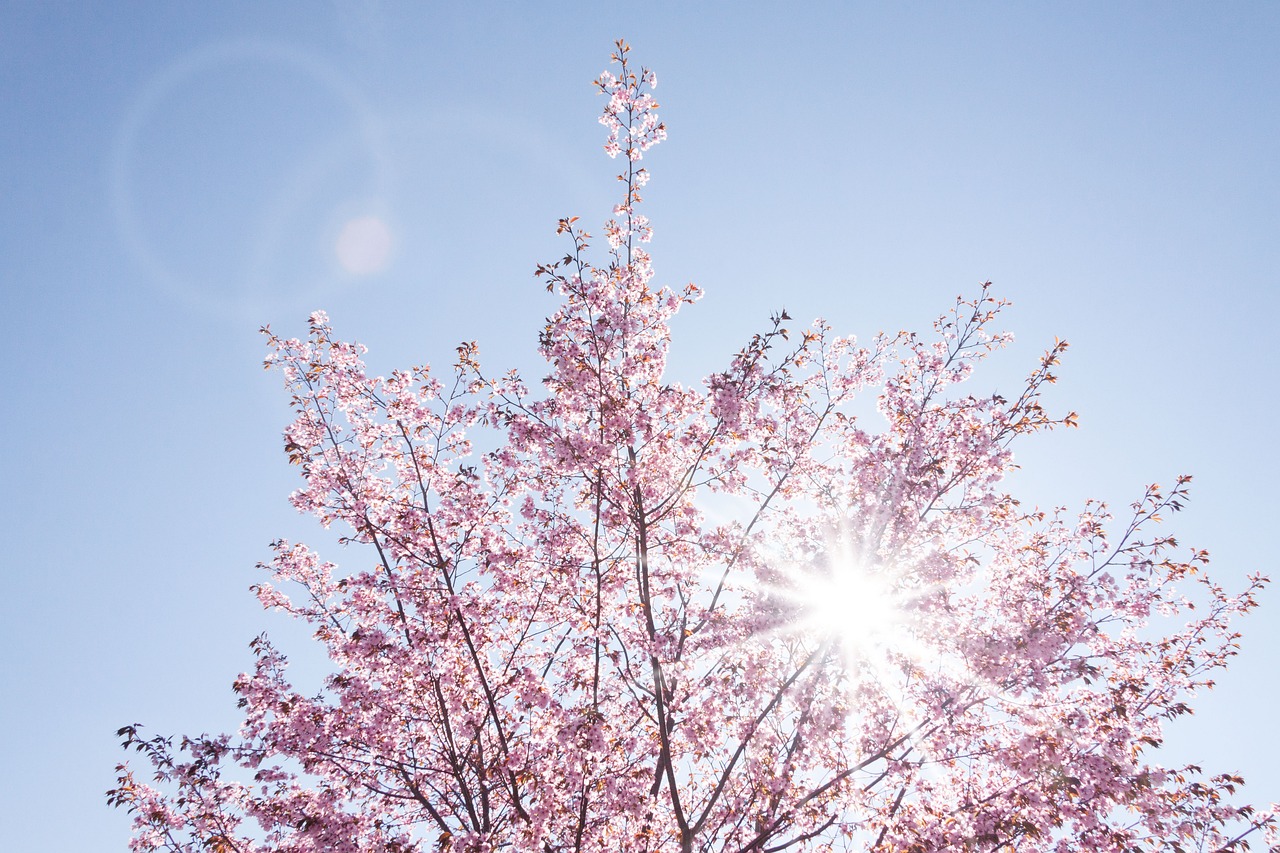
Creating Focal Points
When it comes to designing a Japanese garden, creating focal points is like adding the cherry on top of a beautifully crafted cake. These elements are essential as they draw the eye, create interest, and provide a sense of balance within the garden's overall design. Imagine walking through a lush landscape only to be captivated by the serene presence of a stone lantern or the graceful curve of a wooden bridge. These focal points not only enhance the visual appeal but also contribute to the garden's story, inviting visitors to pause, reflect, and appreciate the beauty around them.
One effective way to create a focal point is through the use of lanterns. Traditional Japanese lanterns, made from stone or wood, can be strategically placed along pathways or near water features. Their soft glow at night creates a magical ambiance, transforming the garden into an enchanting retreat. Similarly, a bridge can serve as a stunning focal point, especially if it arches over a pond or stream. This not only adds height and dimension but also encourages visitors to explore different perspectives of the garden.
Another captivating option is to incorporate sculptures or water features as focal points. A carefully chosen sculpture can resonate with the themes of nature and tranquility. For instance, a statue of a serene Buddha or a playful koi fish can evoke feelings of peace and harmony. Water features, such as a small waterfall or a koi pond, can also serve as dynamic focal points, reflecting the surrounding beauty and providing soothing sounds that enhance the garden's atmosphere.
When designing these focal points, it’s crucial to consider their scale and proportion. A large sculpture might overwhelm a small garden, while a tiny lantern may get lost in a sprawling landscape. To maintain harmony, ensure that each element complements the overall size and layout of your garden. Additionally, think about the viewing angles—you want these focal points to be visible from various spots within the garden, creating a sense of discovery as guests wander through.
Lastly, don’t forget about the seasonal changes. A focal point can take on a different character throughout the year. For example, a flowering tree in spring can be a magnificent centerpiece, while in winter, the bare branches can provide an entirely new aesthetic. By thoughtfully selecting and positioning your focal points, you can create a Japanese garden that remains captivating and engaging, no matter the season.
- What are the best materials to use for focal points in a Japanese garden? Natural materials such as stone, wood, and bamboo are ideal for maintaining authenticity and blending seamlessly with the garden's environment.
- How can I ensure my focal points are effective? Consider the scale, proportion, and viewing angles of your focal points, and make sure they are visible from multiple spots within the garden.
- Can I change my focal points seasonally? Absolutely! Incorporating plants and features that change with the seasons can keep your garden dynamic and interesting throughout the year.
Frequently Asked Questions
- What are the key principles of Japanese garden design?
Japanese garden design is all about balance, tranquility, and the incorporation of natural elements. It aims to create a peaceful sanctuary that reflects the beauty of nature, inviting visitors to pause and appreciate their surroundings.
- What essential elements should I include in my Japanese garden?
To create an authentic Japanese garden, you should include rocks, water features, plants, and pathways. Each of these components plays a vital role in establishing a harmonious environment that resonates with the essence of nature.
- How do I choose the right plants for my garden?
Selecting the right plants involves considering species that thrive in your local climate. Common choices include evergreens, flowering trees, and moss. These plants not only enhance the aesthetic but also provide seasonal interest throughout the year.
- What should I consider for seasonal plant selection?
When choosing plants, think about their blooming cycles. Opt for a mix that offers year-round beauty—this means selecting species that flower in different seasons, ensuring your garden remains dynamic and vibrant.
- How can I maintain the health of my plants?
To keep your plants thriving, focus on proper watering, pruning, and pest management. Regular care will help your Japanese garden flourish and maintain its vibrant appearance.
- Why are water features important in a Japanese garden?
Water features like ponds, streams, and waterfalls are essential as they symbolize tranquility and enhance the overall aesthetic of the garden. They create soothing sounds and reflections that deepen the connection with nature.
- How should I design pathways in my Japanese garden?
Pathways should be winding and thoughtfully laid out to encourage exploration. Use natural materials like stones, gravel, or wood to maintain authenticity and ensure the pathways blend seamlessly with the garden's environment.
- What are some ideas for creating focal points in my garden?
Focal points can include lanterns, bridges, or sculptures. These elements draw the eye and create interest, helping to establish a sense of balance and harmony within your garden space.


















